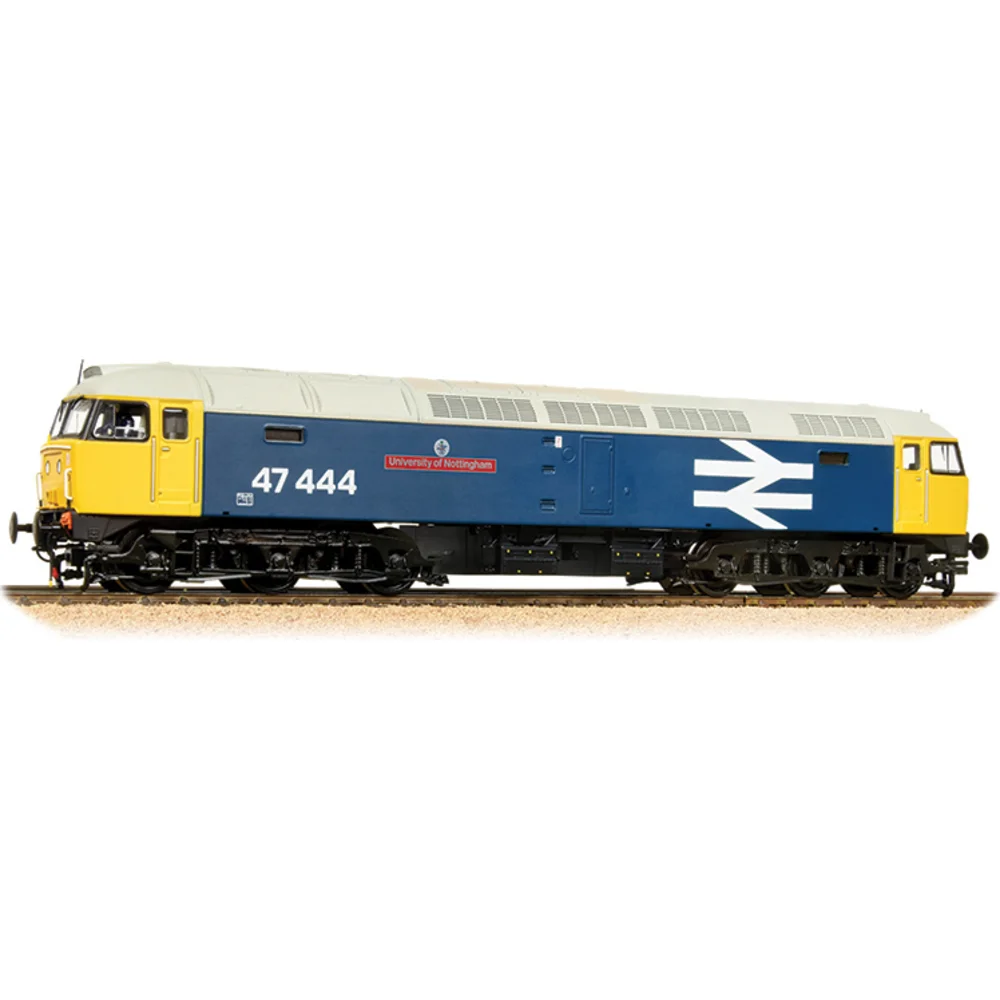Bachmann 31-660A
British Rail Class 47/4 47444 University of Nottingham British Rail Blue with Large Logo
Class & Prototype
- Class: British Rail Class 47/4
- Traction: Diesel
- Transmission: Electric
- Built: 1962-1987
- Total Built: -
- Running Number: 47444
- Name: University of Nottingham
The British Rail Class 47, or Brush Type 4, built 1962-1968, represents Britain's most numerous mainline diesel with 512 locomotives constructed by Brush Traction and BR Crewe Works. Despite early reliability problems, a mid-1960s decision to derate engines from 2,750 to 2,580 bhp transformed the class into Britain's most dependable mixed-traffic locomotive, achieving 55+ years service. Operating across all BR regions hauling everything from royal trains to coal hoppers, Class 47s wore over 30 distinct liveries spanning BR green through colourful sector schemes to privatisation colours. Currently, Bachmann and Heljan produce exceptional OO gauge models with motorised fans, ESU LokSound V5 sound, and 150+ detail parts, while Graham Farish dominates N gauge. With 32 preserved locomotives and continuing heritage operations, the "Duff" remains an iconic part of British railway heritage.
Operator & Livery
- Operator: British Rail
- Livery: Blue with Large Logo
- Era: 8 - British Rail Sectorisation
British Rail (1965-1997) transformed Britain's railways through revolutionary modernisation, introducing the iconic double arrow logo, Rail Blue livery, and business sectorisation. BR pioneered high-speed rail with the InterCity 125 and Advanced Passenger Train, electrified major routes, and created profitable divisions like InterCity and Network SouthEast. From steam succession through diesel and electric development to privatisation preparation, British Rail's diverse locomotive fleet, multiple livery schemes, and operational scenarios provide unparalleled variety for railway modellers across all scales and periods.
BR Blue, also known as Rail Blue or Monastral Blue, was introduced in 1965 as part of British Rail's comprehensive corporate identity overhaul that accompanied the rebranding from British Railways to British Rail. The colour was officially defined by British Standards BR28/6001 (airless spray finish) and BR28/5321 (brush finish), representing a dark, greyish blue tone specifically chosen to hide dirt and weathering effects well.
The livery was prototyped on the experimental XP64 train in 1964 before becoming the standard scheme from 1 January 1965. Rail Blue was applied to all diesel and electric locomotives with yellow warning panels (initially small, then extending to full yellow ends from 1966). The standardised application included the iconic double arrow logo and Rail Alphabet typeface, creating one of the most successful transport corporate identities of the 20th century.
The livery dominated British Rail operations for over two decades until sectorisation in the 1980s began fragmenting the unified appearance. Despite initial colour fading problems in early applications, these were resolved by the late 1970s when the Large Logo variant was introduced featuring extended yellow areas and full-height double arrow symbols. Rail Blue's enduring appeal among railway enthusiasts reflects its role as the definitive British Rail image during the organisation's most unified period.
